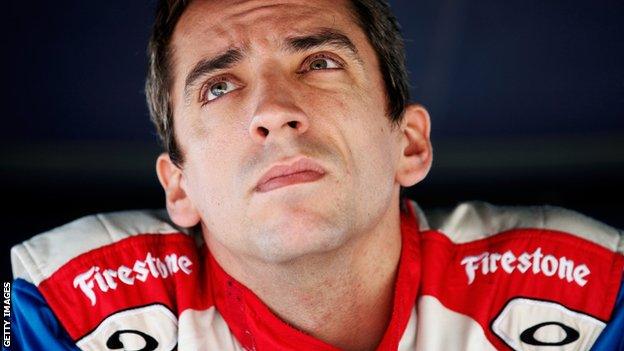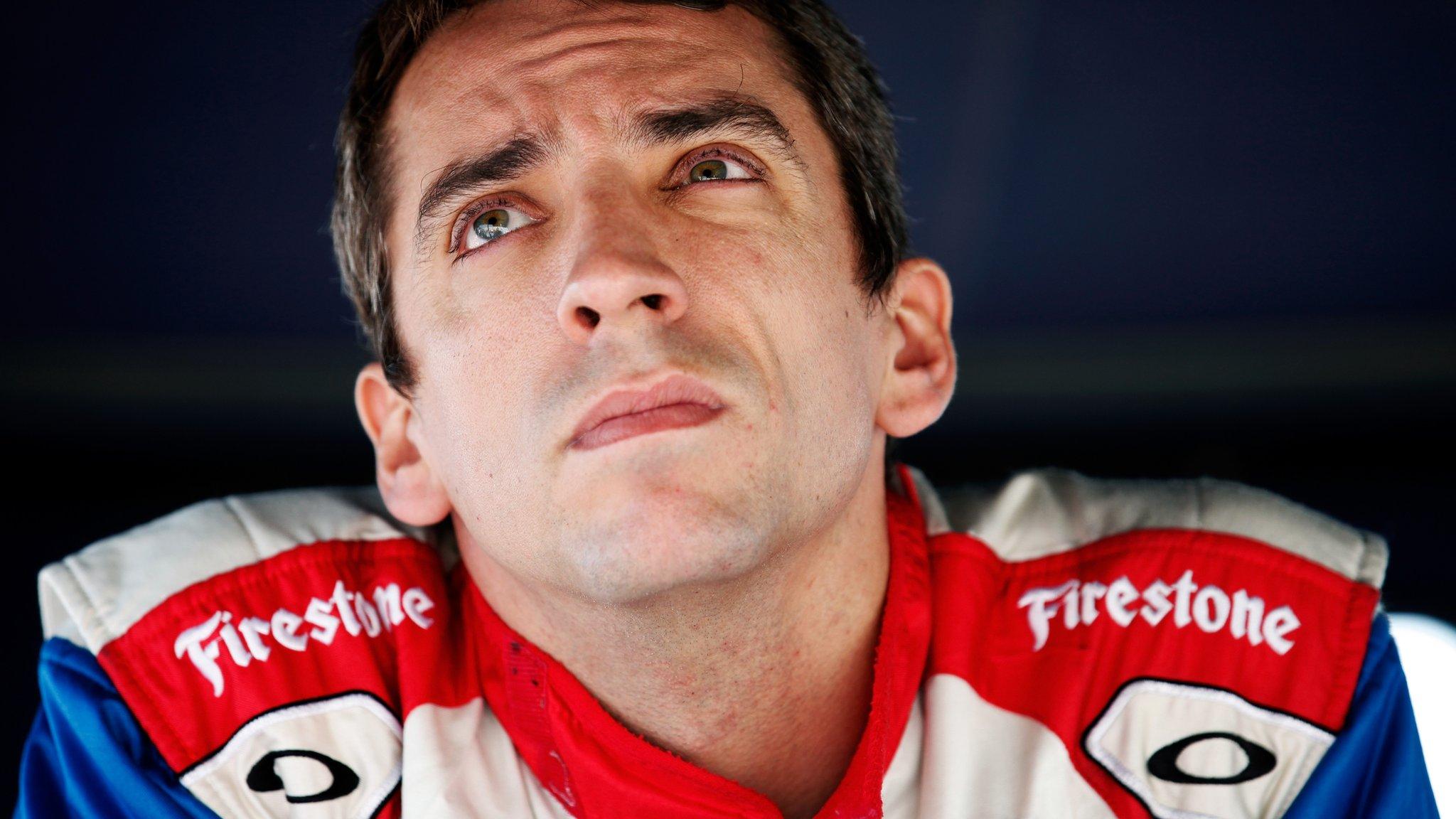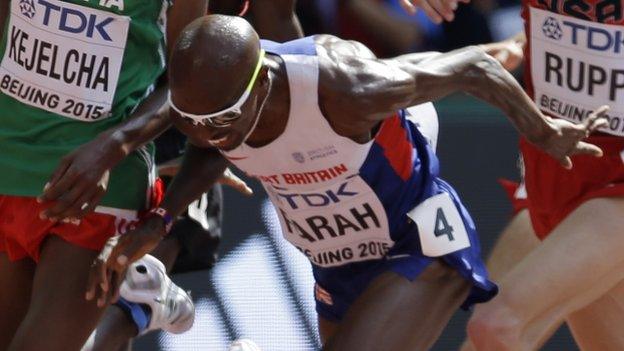Justin Wilson death: Motorsport 'must improve' driver safety
- Published

Former F1 driver Justin Wilson was a seven-time winner in American open-wheel racing
Motorsport's governing body says it will continue to look at ways of improving driver safety following the death of British driver Justin Wilson.
Wilson, 37, died on Monday after he was struck by debris in Sunday's Pocono IndyCar 500 and crashed into a wall.
The FIA has tested a number of new designs, and is planning more - including the possible introduction of a protected, closed canopy cockpit.
"We must make something," said the FIA's F1 director Charlie Whiting.
"Even if it's not 100% in terms of protecting the driver under all circumstances.

Stefan Wilson says his brother Justin helped save six lives after he donated his organs following his death
"If it improves the situation, it has to be good. There must be a way."
The FIA has been looking into various methods to provide better protection for drivers' heads since Formula 1 driver Felipe Massa was hit on the helmet by a bouncing spring during qualifying, external for the 2009 Hungarian Grand Prix.
Cockpits enclosed by a fighter jet-style canopy had been considered, but were dismissed because of concerns about the strength of the cover.
However, the death of Wilson, who competed in F1 for Minardi in 2003, has brought the issue of open cockpits into question once again.
Brazilian former Formula 1 driver Lucas Di Grassi believes it is only a matter of time before closed canopies are introduced.
He wrote on Twitter:, external "Canopies will be used in every single formula (open-wheel) series in the future. Not only for safety, but for aerodynamic improvement."

The FIA has tested a number of cockpit designs, including a fighter-jet style canopy, in an effort to improve driver safety
'Not the fix-all solution'
However, former Formula 1 world champion Mario Andretti believes the introduction of closed cockpits could bring with it other safety concerns.
"I think it probably brings on more problems than we have at the moment," Andretti, a four-time IndyCar champion, told BBC Radio 5 live.
"The vision, potential to be trapped and many other aspects. It is not the fix-all situation."
Analysis
by BBC Sport's chief F1 writer Andrew Benson
"Formula 1's governing body has been making incremental but significant steps forward in head protection ever since the fateful Imola weekend in 1994,, external when Ayrton Senna was killed by a suspension arm piercing his helmet.
"The key difficulty has been finding a solution that increases head protection while not raising other safety issues, such as driver visibility and egress.
"Following the rejection of canopies and a forward roll-hoop a couple of years ago, on various grounds, a number of different ideas have come up.
"One has been dubbed the 'halo' - an oval structure emerging from behind the driver's head supported by a curved vertical strut at the front of the cockpit.
"Another is a series of vertical fins placed around the cockpit at angles which minimise the disruption to vision but which would deflect large objects.
"Research will not stop until an answer is found."
- Published25 August 2015

- Published25 August 2015

- Published26 August 2015
